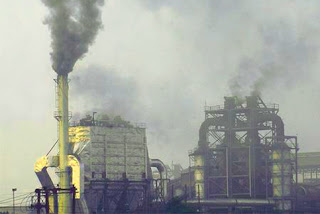Concrete surfaces can evacuate sulfur dioxide, a noteworthy supporter of air contamination, from the air, new research recommends.
The discoveries could be a noteworthy stride toward the act of utilizing waste cement to limit air contamination.
As per the World Health Organization, upwards of seven million unexpected losses worldwide might be connected to poor air quality and contamination. Sulfur dioxide emanations are among the most widely recognized poisons into the air comprehensively, with control plants transmitting the most sulfur dioxide. Concrete furnaces likewise create roughly 20 percent of all sulfur dioxide modern outflows.
"Despite the fact that delivering solid causes air contamination, solid structures in urban ranges can fill in as a sort of wipe adsorbing sulfur dioxide to an abnormal state," clarifies Alex Orlov, relate educator of materials science and substance building in the College of Engineering and Applied Sciences at Stony Brook University.
"Our discoveries open up the likelihood that waste solid originating from building decimations can be utilized to adsorb these toxins," Orlov says.
He includes that solid remains the most generally utilized material on the planet and is reasonable. Along these lines, Orlov underscores that "the technique of utilizing contamination causing material and transforming it into an ecological arrangement could prompt new speculation in urban plan and waste administration."
Orlov alerts that the limit with regards to cement to adsorb contaminations reduces after some time as the material ages. Squashing concrete, be that as it may, can uncover new surfaces and reestablish its contamination evacuating properties.
The analysts utilized different concrete and bond based building materials to lead their examinations. They utilized Diffuse Reflectance Infrared Fourier Transform Spectroscopy (DRIFTS) and X-beam assimilation Near Edge Spectroscopy (XANES) to distinguish the levels of sulfur dioxide adsorption on the materials.
Tests were led at Stony Brook University, Brookhaven National Laboratory's National Synchrotron Light Source and Center for Functional Nanomaterials, and the National University of Singapore. Orlov is an employee of Stony Brook's Consortium for Inter-Disciplinary Environmental Research.




No comments:
Post a Comment